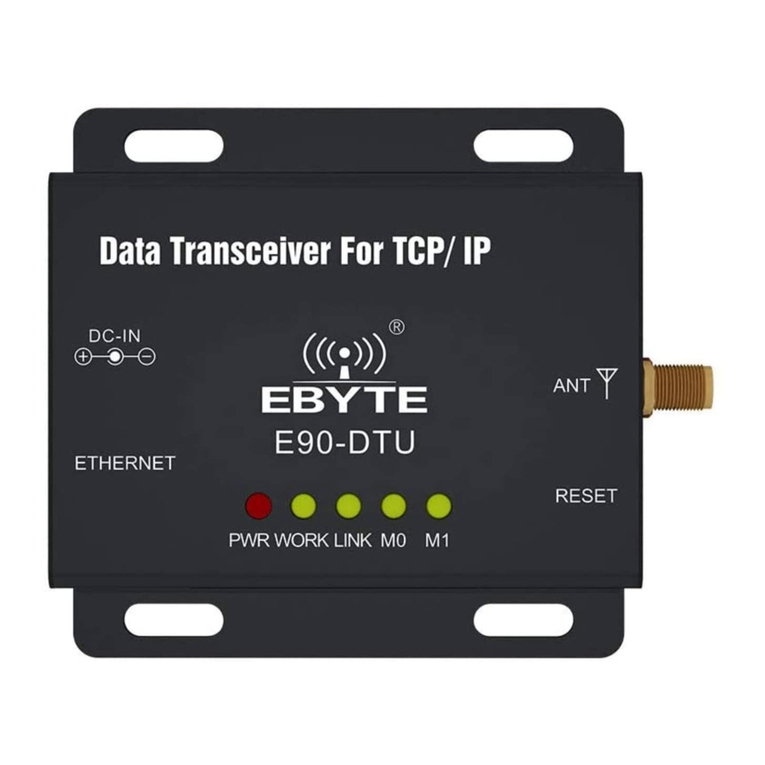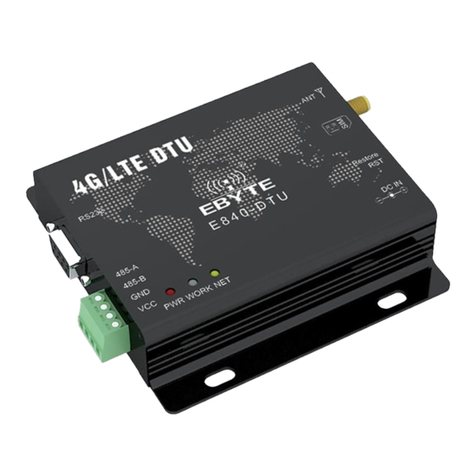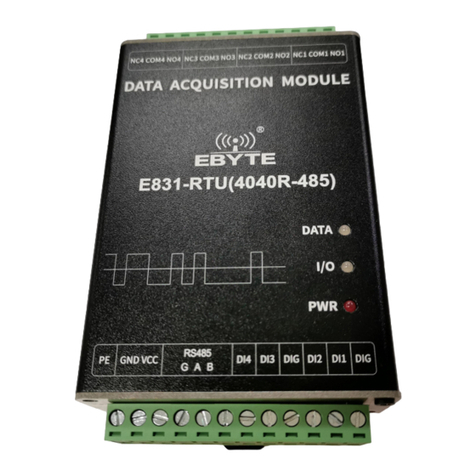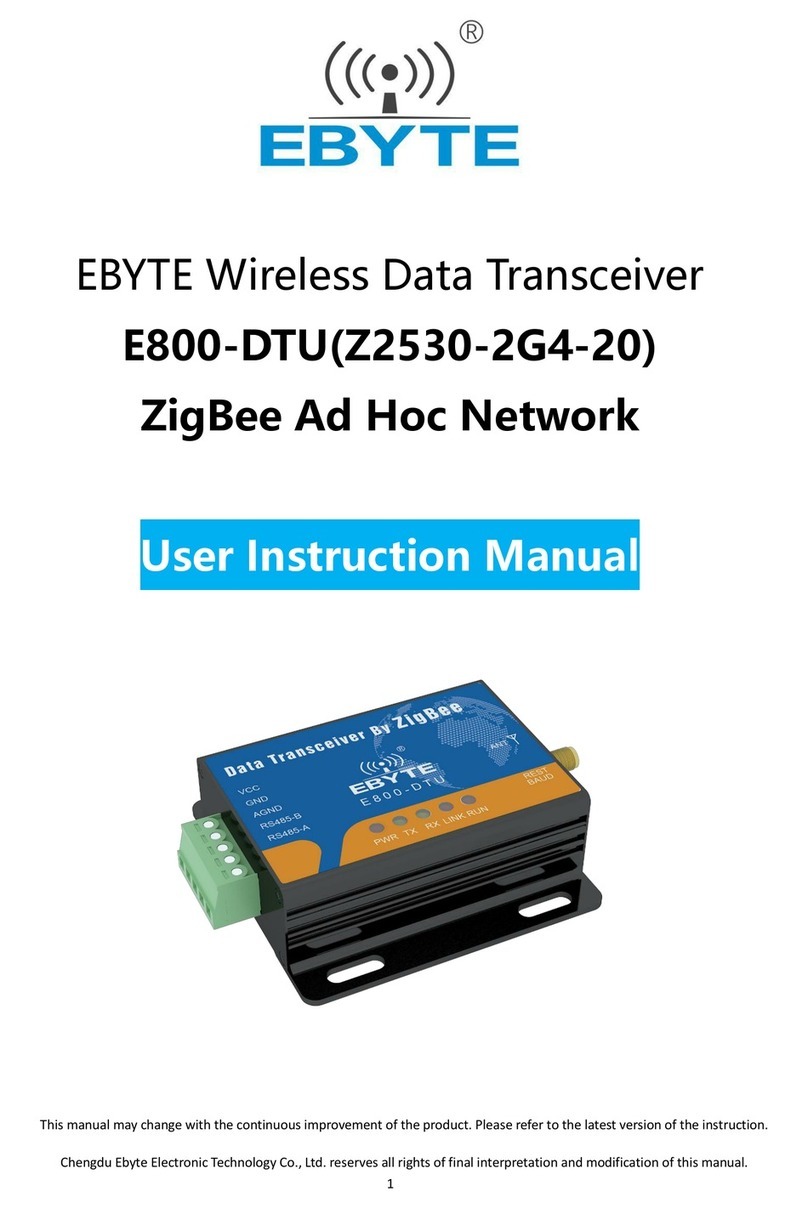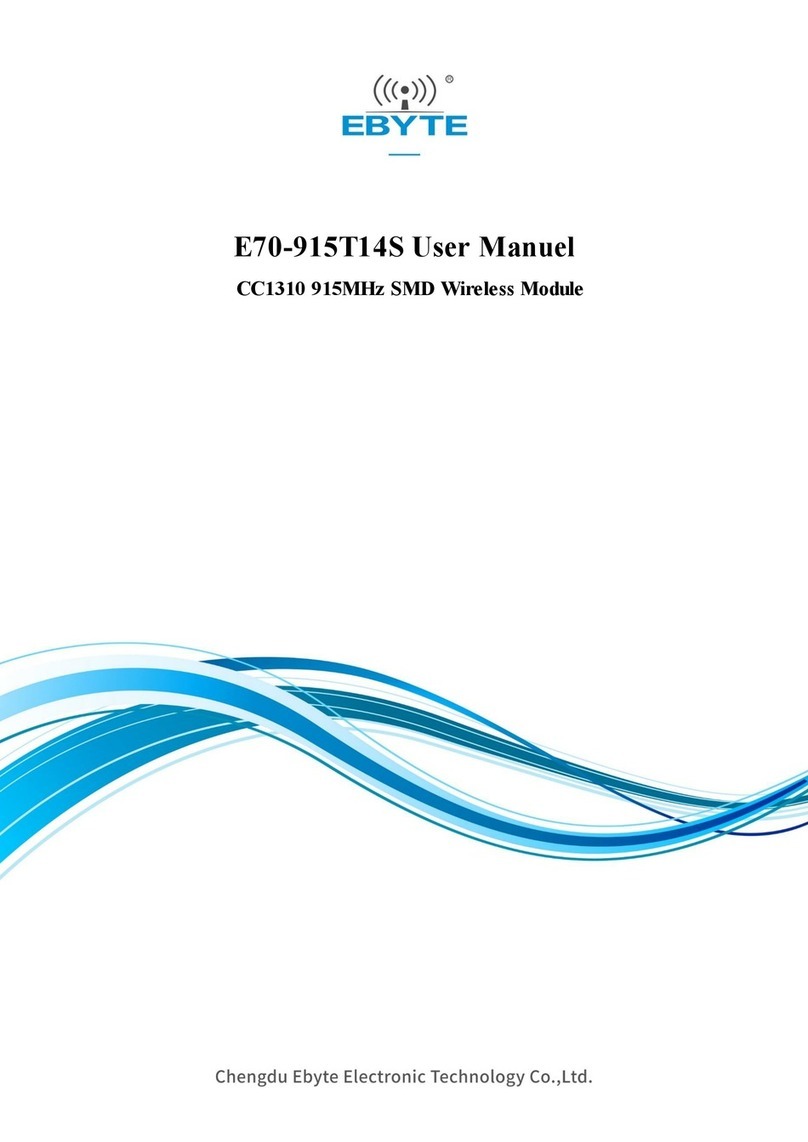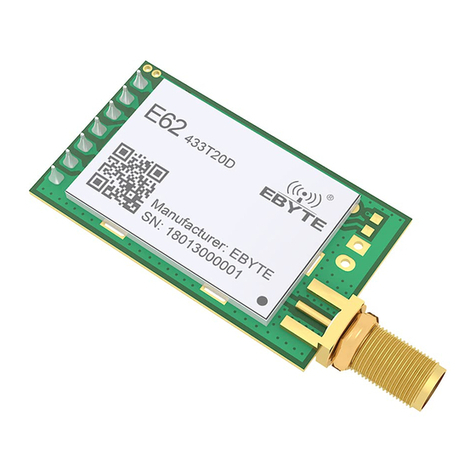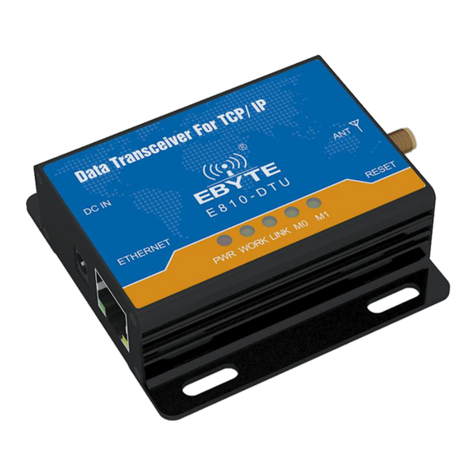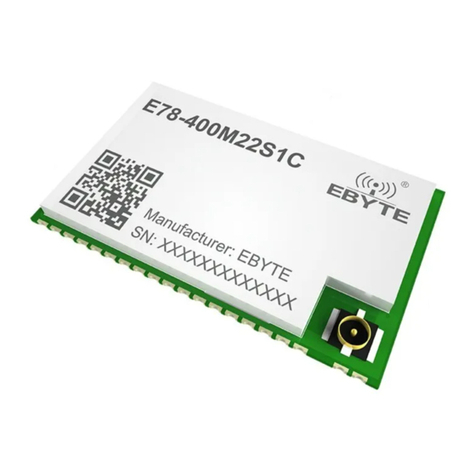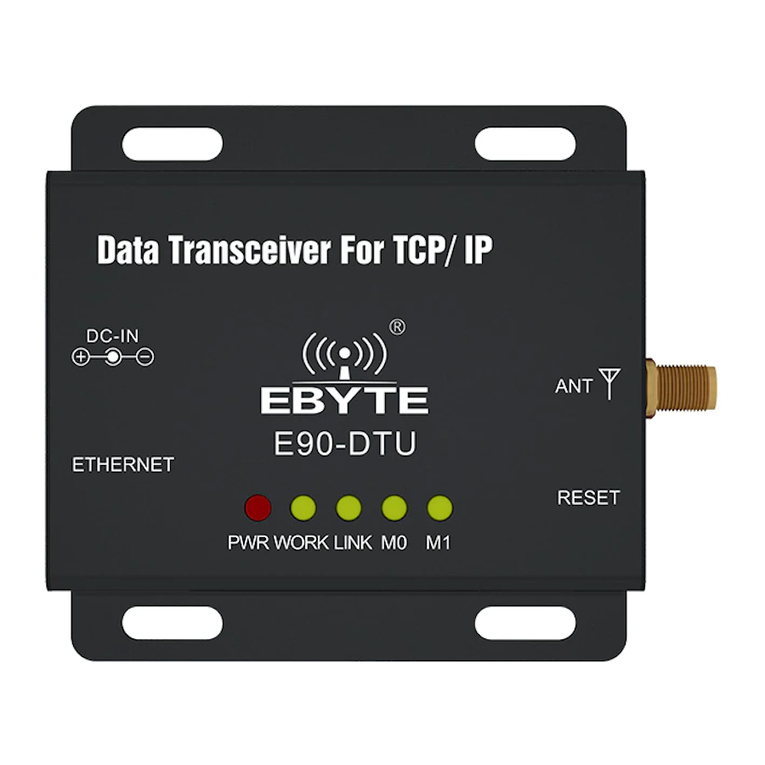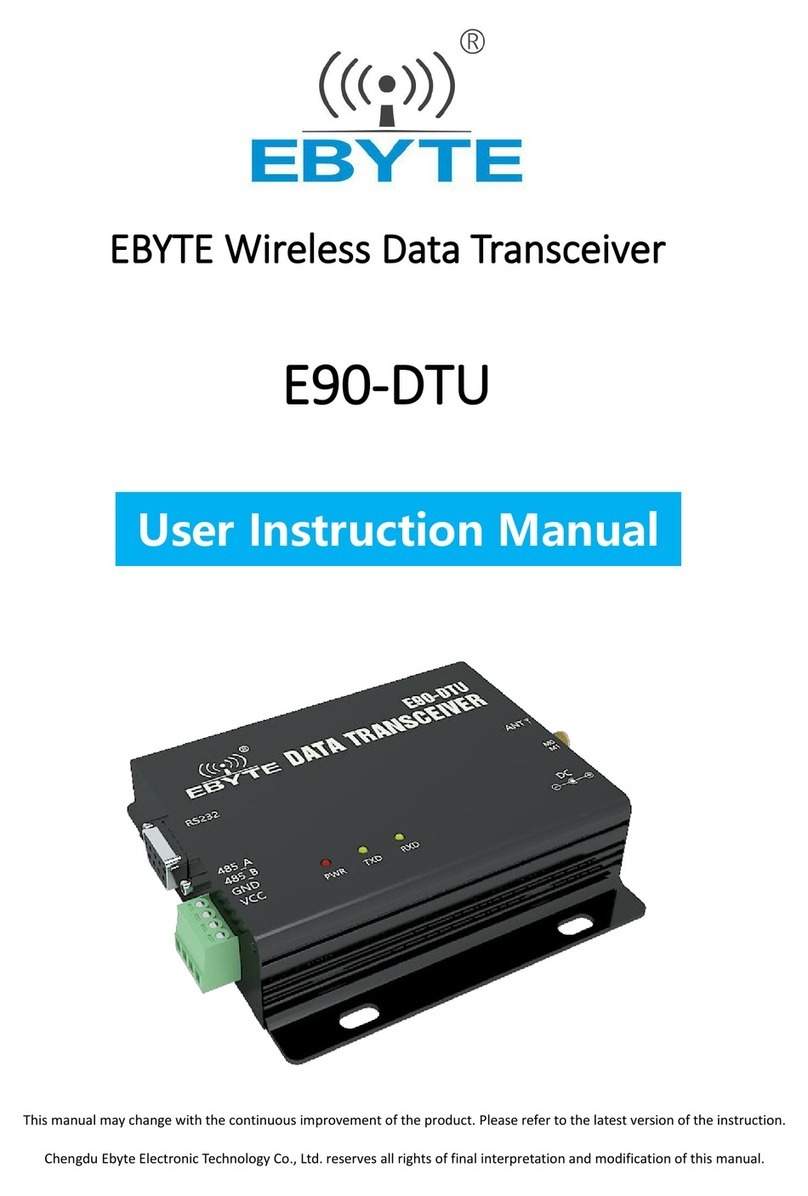
Chengdu Ebyte Electronic Technology Co.,Ltd. E34-2G4H20D User Manual
Copyright ©2012–2020, Chengdu Ebyte Electronic Technology Co., Ltd.
Contents
Contents ····················································································································································································································································1
1. Introduction.............................................................................................................................................................................................................. 2
1.1 Feature............................................................................................................................................................................................................ 3
1.2 Electrical parameter........................................................................................................................................................................................4
1.3 E34 series........................................................................................................................................................................................................5
1.4 FAQ................................................................................................................................................................................................................ 5
2. UART functional description....................................................................................................................................................................................6
2.1 Broadcast transmission...................................................................................................................................................................................6
2.2 Broadcast address........................................................................................................................................................................................... 7
2.3 Monitor address..............................................................................................................................................................................................7
3. Functional description.............................................................................................................................................................................................. 8
3.1 Pin definition.................................................................................................................................................................................................. 8
3.2 Connect to MCU.............................................................................................................................................................................................9
3.3 Reset............................................................................................................................................................................................................... 9
3.4 AUX description.............................................................................................................................................................................................9
4. Operating mode...................................................................................................................................................................................................... 12
4.1 Mode switch................................................................................................................................................................................................. 12
4.2 Fixed Frequency Mode (Mode 0).................................................................................................................................................................13
4.3 Frequency hopping mode (Mode 1)............................................................................................................................................................. 13
4.4 Reservation mode (Mode 2)......................................................................................................................................................................... 13
4.5 Sleep mode (Mode 3)................................................................................................................................................................................... 14
4.6 Quick communication test............................................................................................................................................................................14
5. Instruction format................................................................................................................................................................................................... 15
5.1 Default parameter......................................................................................................................................................................................... 15
5.2 Parameter setting instruction........................................................................................................................................................................ 15
5.3 Reading operating parameters...................................................................................................................................................................... 18
5.4 Reading version number...............................................................................................................................................................................18
5.5 Reset instruction........................................................................................................................................................................................... 18
6. Parameter setting.................................................................................................................................................................................................... 19
7. Customization.........................................................................................................................................................................................................20
Revision history..........................................................................................................................................................................................................20
About us..................................................................................................................................................................................................................... 20
